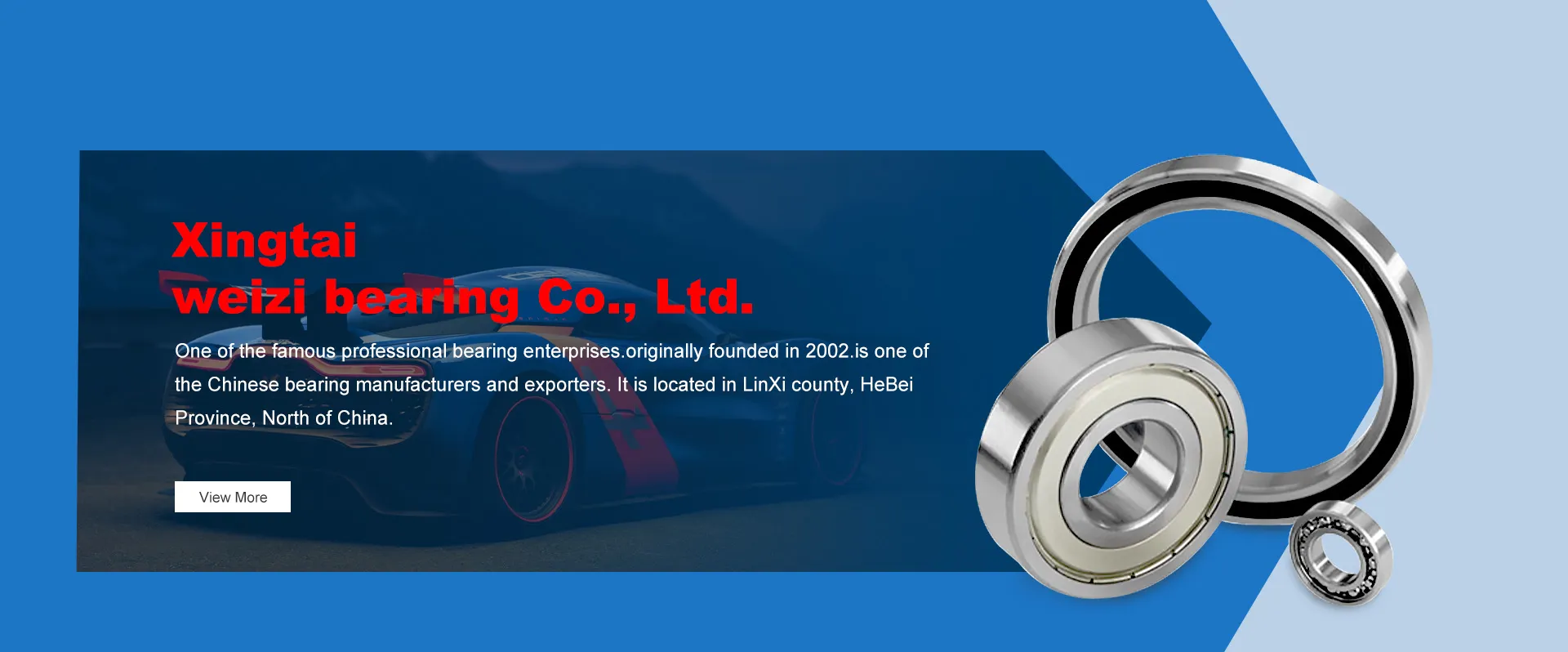
Dec . 03, 2024 16:56 Back to list
difference between deep groove ball bearing and ball bearing
The Difference Between Deep Groove Ball Bearings and Ball Bearings
Bearings are essential components found in many mechanical systems. They facilitate rotational or linear motion by reducing friction between moving parts. Among the various types of bearings, deep groove ball bearings and conventional ball bearings are two of the most widely used. While they may appear similar at first glance, several key differences set them apart in terms of design, performance, and application. This article aims to elucidate the distinct features and advantages of each type, helping you make an informed choice for your specific needs.
Design Characteristics
Deep groove ball bearings and standard ball bearings differ in their design. Deep groove ball bearings consist of an outer ring, an inner ring, a set of balls, and a cage that keeps the balls in place. Their groove shape is what gives them the name deep groove. This design allows them to accommodate radial as well as axial loads in both directions, making them versatile for a range of applications.
On the other hand, conventional ball bearings typically only cater to radial loads and are designed for more straightforward applications. They have a shallower groove, which limits their capability to handle significant axial loads. This fundamental difference in design makes deep groove ball bearings more adaptable and preferable for many industrial settings.
Load Capacity
One of the most notable differences between these two bearing types is their load capacity. Deep groove ball bearings are engineered to bear higher loads compared to standard ball bearings, thanks to their deeper grooves that provide better contact with the balls. This feature not only supports a greater amount of weight but also enhances their durability and lifespan under heavy use. In contrast, standard ball bearings might fail more quickly when subjected to high axial and radial loads.
Speed and Efficiency
difference between deep groove ball bearing and ball bearing

In terms of rotational speed, deep groove ball bearings excel. Their design permits high-speed operation, making them suitable for applications such as electric motors, where efficiency is paramount. The ability of deep groove ball bearings to maintain lower friction levels contributes to their excellent speed capabilities.
Conversely, conventional ball bearings may not perform as well at high speeds. Their design limitations make them less efficient, especially in dynamic environments where speed and reduced friction are critical. Hence, deep groove ball bearings are often the go-to choice for high-speed applications due to their superior performance.
Versatility and Applications
The versatility of deep groove ball bearings enables them to be used in various applications across different industries. From automotive to industrial machinery, their ability to handle both radial and axial loads makes them ideal for applications requiring reliability and performance under diverse conditions. You can easily find deep groove ball bearings in power tools, conveyor systems, and household appliances.
Standard ball bearings, while effective, are limited mostly to applications with lower load requirements and less complex operational demands. Although they can still be found in various devices, their use is generally reserved for simpler machinery where load-bearing is not a significant concern.
Conclusion
In summary, both deep groove ball bearings and standard ball bearings play crucial roles in mechanical engineering and design. However, the differences in their design, load capacity, speed capabilities, and application versatility highlight why deep groove ball bearings are often preferred for more complex and demanding environments. Understanding these distinctions can help engineers and technicians select the appropriate bearing type for their specific applications, ensuring optimal performance and longevity of machinery. When in doubt, opting for deep groove ball bearings can provide a superior solution for managing friction, loads, and speed in various mechanical systems.
Latest news
-
Grooved Ball Bearing Design and Functionality
NewsJun.04,2025
-
Concrete Mixer Bearing Load Capacity Testing
NewsJun.04,2025
-
6004 Bearing Dimensions in Robotic Joint Designs
NewsJun.04,2025
-
Advantages of Single-Row Deep Groove Ball Bearings
NewsJun.04,2025
-
Applications of Deep Groove Ball Bearings in Automotive Systems
NewsJun.04,2025
-
Innovations in Bearing Pressing Machine Design
NewsJun.04,2025
